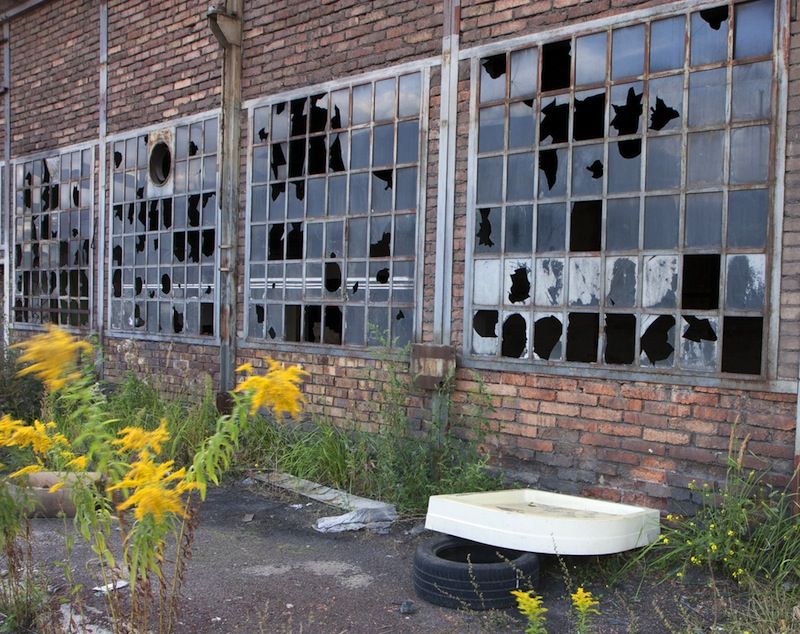Visiting a Rough Neighborhood Alters the Psyche

The neighborhood a person lives in can influence their likelihood of depression, feelings of trust and even their chances of becoming a criminal. Now, a study suggests the environment is even more powerful than believed: Even a 45-minute visit can influence people's levels of trust and paranoia.
Students who visited a poor, crime-ridden neighborhood only briefly exhibited less trust and more paranoia than students bussed temporarily to a well-off community, according to new research published today (Jan. 14) in the open-access journal PeerJ.
"What really surprised us is that the visitors, they looked [psychologically] just like the people in the place they visited," said study researcher Daniel Nettle, a professor of behavioral science at Newcastle University.
Community psychology
Community environment is linked with individual psychology in a number of ways. Unsurprisingly, communities with higher levels of unemployment and poverty have higher rates of violence, according to the American Psychological Association. Poor housing conditions and lack of community participation are also linked to negative psychological outcomes. Places with strong social ties and a good economy are less likely to be plagued by crime and other problems. One 2011 study even found that women who moved from a poor neighborhood to a more affluent one had better physical health than those who stayed behind. [The 10 Most Controversial Psychiatric Disorders]
Nettle has been studying these neighborhood effects in the city of Newcastle upon Tyne in England for many years. How long, he and his colleagues wondered, does a person have to live in a neighborhood for its effects to be felt?
To find out, the researchers first surveyed residents from two neighborhoods in Newcastle, one that was well-off and the other one poor and downtrodden, a victim of disappearing industry jobs in the city. The poor neighborhood has twice the crime rate, and six times the rate of violent crimes, compared with the well-off one.
Sign up for the Live Science daily newsletter now
Get the world’s most fascinating discoveries delivered straight to your inbox.
The surveys revealed the residents of the poorer neighborhood were more paranoid and less likely to trust others than people from the richer spot.
Next, Nettle and his colleagues recruited 52 student volunteers and randomly assigned each to go to one neighborhood or the other to deliver questionnaires. Each student was dropped off at a meeting point in the neighborhood, given a personal map with 10 addresses to visit, and told to meet back at the drop-off point when done. After they returned, each student filled out a survey on their own levels of trust and paranoia.
Paranoia and trust
The findings were striking. Visitors to the well-off neighborhood showed high levels of trust and low levels of paranoia. Visitors to the rough part of town were the opposite, expressing high paranoia and low trust.
"Imagine you're in a place where the houses are boarded up and some of them have broken windows, and there's lots of litter and broken glass everywhere," Nettle told LiveScience. "How does that make you feel?"
If the emotions were understandable, the rapidity with which people adopted a neighborhood's outlook was surprising, Nettle said, adding the increased paranoia probably wore off quickly, as well.
Nettle next would like to take people from the poorer neighborhood and have them spend time in the richer neighborhood and vice versa to see if they show similar changes in attitude, too.
The findings are important in highlighting the power of the community in human well-being, Nettle said.
"The environment affects us," he said. "It affects us really profoundly. It's kind of no good giving people individual psychotherapy or whatever if you then let them out into a world that's disordered and chaotic."
Follow Stephanie Pappas on Twitter and Google+. Follow us @livescience, Facebook & Google+. Original article on LiveScience.

Stephanie Pappas is a contributing writer for Live Science, covering topics ranging from geoscience to archaeology to the human brain and behavior. She was previously a senior writer for Live Science but is now a freelancer based in Denver, Colorado, and regularly contributes to Scientific American and The Monitor, the monthly magazine of the American Psychological Association. Stephanie received a bachelor's degree in psychology from the University of South Carolina and a graduate certificate in science communication from the University of California, Santa Cruz.












